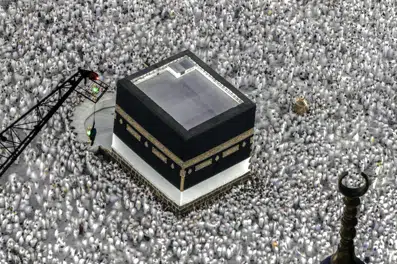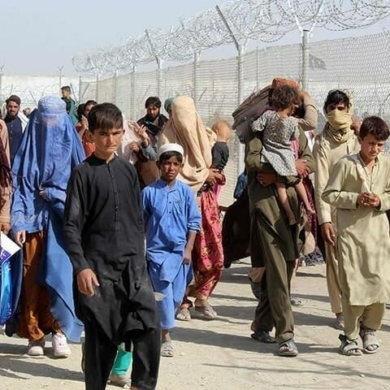In a remarkable feat, Saudi Arabia has welcomed over 99 million pilgrims from 1390 AH to 1443 AH, according to data from the General Authority for Statistics.
Fueled by the Kingdom’s commitment to enable Muslims to perform Hajj, the Cabinet, chaired by the Custodian of the Two Holy Mosques, King Salman bin Abdulaziz Al Saud, approved hosting pre-pandemic levels of pilgrims for the year 1444 AH.
This decision aligns with Saudi Arabia’s Vision 2030, which aims to receive more than 30 million Umrah pilgrims by 2030.
Hajj, the fifth pillar of Islam, holds great significance for Muslims worldwide, who travel to the holy city of Makkah regardless of their nationality, race, or social status.
However, the pilgrimage was not always easily accessible.
In the past, pilgrims faced arduous journeys, traveling by ships, camelback, and even on foot. The routes were perilous, plagued by undeveloped roads, lack of water stations, and the constant threat of raiders.
However, a new chapter emerged with the establishment of the Saudi state, ushering in significant improvements in pilgrimage experiences. The Kingdom’s commitment to safety and security, coupled with advancements in transportation, particularly aviation, has made it possible for pilgrims from around the world to reach Makkah within hours.
Modern vessels equipped with comfortable amenities have made seafaring pilgrimages to Jeddah Islamic Port a pleasant experience, while air-conditioned buses traverse highways, offering pilgrims rest and refueling stops. The Al Mashaaer Al Mugaddassah Metro line, integrated into the transport and logistics system, has further alleviated traffic congestion, ensuring safe and swift movement for pilgrims.
Throughout history, the Grand Mosque in Makkah has undergone numerous expansions, with each ruler leaving their mark.
From the early expansions by Caliph Omar ibn Al-Khattab to the extensive development during the Saudi era, the Grand Mosque has been meticulously cared for and enhanced. King Abdulaziz initiated comprehensive restoration, covering the mosque in marble and installing pavilions to shield worshippers from the sun’s heat. Subsequent rulers continued to invest in the mosque’s infrastructure, from the tiling of floors to the expansion of courtyards and the installation of modern amenities.
To further enhance the pilgrim experience and align with Saudi Arabia’s Vision 2030, the Pilgrim Experience Program (PEP) was launched. This program aims to improve services, enrich the religious and cultural experiences of pilgrims, and contribute to the overall goals of Vision 2030.
In recent years, several initiatives have been implemented to enhance the Hajj and Umrah sectors. These include the issuance of e-visas for pilgrims from all countries, extending the Umrah season, and launching the Makkah Bus project. The development of Islamic historical sites and the facilitation of entry for Umrah pilgrims through various visa types have also been prioritized. Initiatives such as the Nusuk app, Hajj smart cards, Bag-Free Hajj, and the Makkah Route Initiative have streamlined entry procedures and created a more comfortable and spiritually enriching pilgrimage experience.



